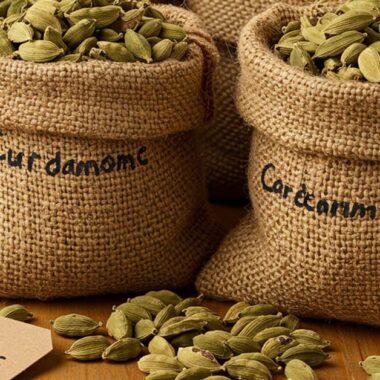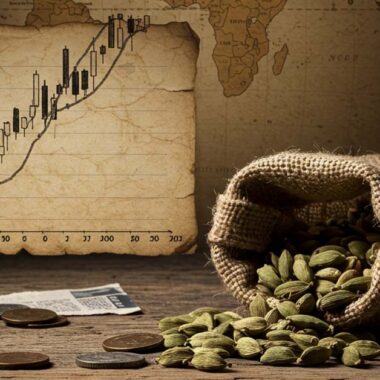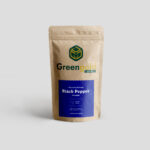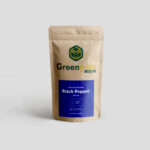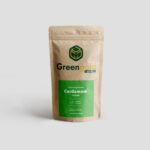Cardamom, often hailed as the “Queen of Spices,” holds a prominent position in the global spice trade due to its distinctive flavor, aroma, and numerous health benefits. As demand for this aromatic spice continues to grow worldwide, two countries stand out as the dominant players in the cardamom market: India and Guatemala. 🌾📊
In this blog, we’ll explore why these two nations have such a commanding presence in the global cardamom market and what factors contribute to their dominance. 🌍✨
🇮🇳 India: The World’s Largest Producer of Cardamom
India is the undisputed leader in cardamom production, contributing approximately 70% of the world’s supply. With its favorable climate, rich agricultural traditions, and vast cultivation areas, India has been at the forefront of the cardamom industry for centuries. Here’s why India dominates the cardamom market:
1. Ideal Growing Conditions
India, especially the state of Kerala, is blessed with the perfect climate for growing cardamom. The spice thrives in the humid, tropical conditions with consistent rainfall, temperatures ranging between 10°C to 30°C, and rich soil types found in the Western Ghats. 🌧️🌱
- High-altitude regions provide optimal conditions for cardamom cultivation. The temperature fluctuations between day and night, along with the misty weather, help enhance the flavor and quality of the spice. 🌿
2. Established Cultivation and Expertise
Cardamom farming in India has deep cultural and historical roots. Farmers in India have developed highly sophisticated cultivation techniques over the years, passed down through generations. This expertise ensures that Indian cardamom remains of the highest quality. 👩🌾🔬
- Experienced labor force: Indian farmers have a deep understanding of the nuances of cardamom cultivation, from planting to harvesting. The industry is often run by family-owned farms that focus on quality, consistency, and sustainable practices. 🏡🌱
3. Large Scale of Production
India’s cardamom cultivation is on a massive scale. The country produces over 30,000 tons of cardamom annually, which is processed and exported to global markets. Kerala, Tamil Nadu, and Karnataka are the primary states involved in the cultivation of this spice. 🌍
- Kerala is the largest producer, responsible for over 60% of India’s cardamom production. It has several farms and cooperatives that contribute to the country’s dominance. 📍
4. Export Hub
India’s cardamom is not only consumed domestically but is also a major export commodity. The spice is highly sought after in countries across the world, particularly in the Middle East, Europe, and North America. India’s well-established export infrastructure helps ship cardamom worldwide, ensuring it reaches global markets efficiently. 🚢📦
- Key Export Destinations: The Middle East, where cardamom is a key ingredient in coffee and sweets, and Europe, which loves cardamom in baked goods and teas, are the largest markets for Indian cardamom. 🌍
🇬🇹 Guatemala: A Rising Power in Cardamom Production
While India leads the global cardamom market, Guatemala has emerged as a close competitor and a key player in the industry. The country has gained considerable market share, particularly over the last two decades, and currently produces about 25% of the world’s cardamom supply. Here’s how Guatemala has made its mark on the global cardamom market:
1. Ideal Growing Conditions
Guatemala’s climate is particularly favorable for growing high-quality cardamom. Located in Central America, the country’s volcanic soil and temperate climate provide ideal conditions for cardamom cultivation, especially in regions like Alta Verapaz and Baja Verapaz. 🌋🌱
- Like India, Guatemala benefits from consistent rainfall, high humidity, and cool temperatures, which help produce cardamom of exceptional flavor and aroma. 🌧️
2. Smallholder Farmers
In Guatemala, cardamom is predominantly grown by smallholder farmers, who cultivate the spice on small plots of land. This system has allowed many farmers to become involved in the industry and has contributed to its rapid growth. 🌿
- Cooperatives play a significant role in supporting farmers by providing technical assistance, market access, and financial support. As a result, Guatemala has seen a rise in the number of cardamom cooperatives, which help small-scale farmers improve their yields and quality. 👩🌾💪
3. Sustainable and Organic Farming
Guatemala is known for its focus on sustainable farming practices. Many farmers in the country use organic methods for cultivating cardamom, avoiding pesticides and chemicals, and promoting environmentally friendly practices. 🌱💧
- The demand for organic cardamom has been rising in international markets, and Guatemala has capitalized on this by positioning itself as a supplier of high-quality organic cardamom. 🌿🌍
4. Export Success
Guatemala’s cardamom exports have significantly grown in recent years, especially in the European and Middle Eastern markets. The country exports both green cardamom and black cardamom, which are used in various cuisines and medicinal products. 🚢📦
- Strong Export Network: Guatemala’s cardamom is now recognized globally for its quality, and the country is a key exporter to the United States, Saudi Arabia, and Turkey, among others. 🌍✈️
💡 Factors Contributing to India and Guatemala’s Dominance in the Cardamom Market
1. Ideal Climate and Geography
Both India and Guatemala enjoy climatic conditions that are perfect for growing cardamom. High rainfall, cool temperatures, and fertile soil are crucial for producing cardamom that meets global standards. 🌧️🌱
2. Skilled Labor and Expertise
Both countries benefit from a deep tradition of cardamom cultivation, with farmers possessing extensive knowledge of cultivation techniques, pest control, and harvesting practices. This expertise is key to producing high-quality cardamom. 👩🌾🔬
3. Global Trade Networks
Both India and Guatemala have established robust export channels and global trade networks that allow them to distribute cardamom to international markets. Their established connections ensure a steady flow of cardamom to regions that demand it the most. 🌍🚢
4. Price Competitiveness
Due to the large-scale production and low labor costs, cardamom from India and Guatemala can be offered at competitive prices in the global market. This price advantage makes them preferred suppliers for many international buyers. 💲📉
🌿 Conclusion
India and Guatemala have proven themselves as powerhouses in the global cardamom market. With their ideal growing conditions, skilled labor, and well-established export networks, they continue to dominate the production and trade of this valuable spice. 🌍📊
As cardamom demand continues to rise, both countries will likely remain at the forefront of the industry, influencing global prices, trade, and market trends. 🌾✨

